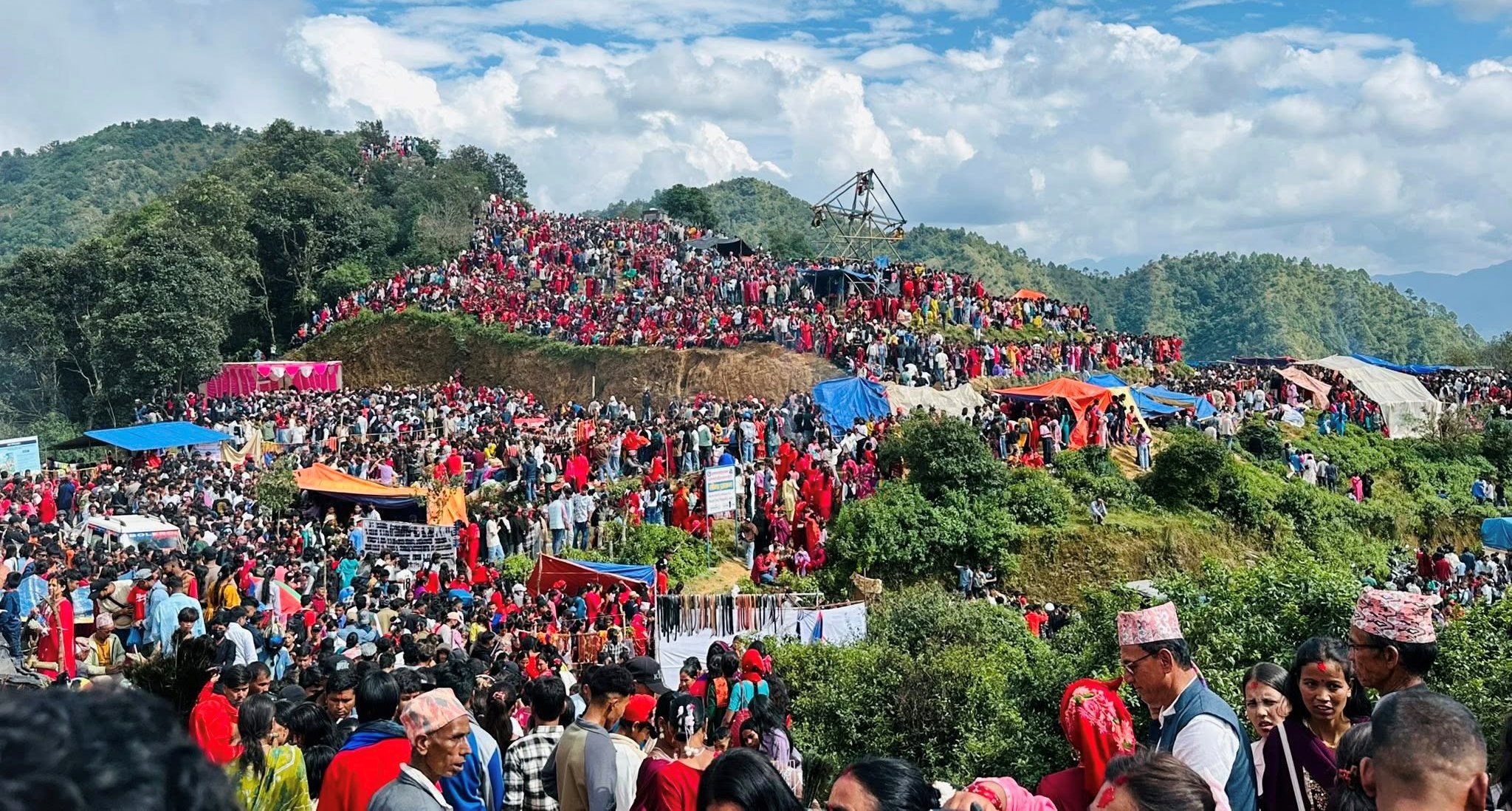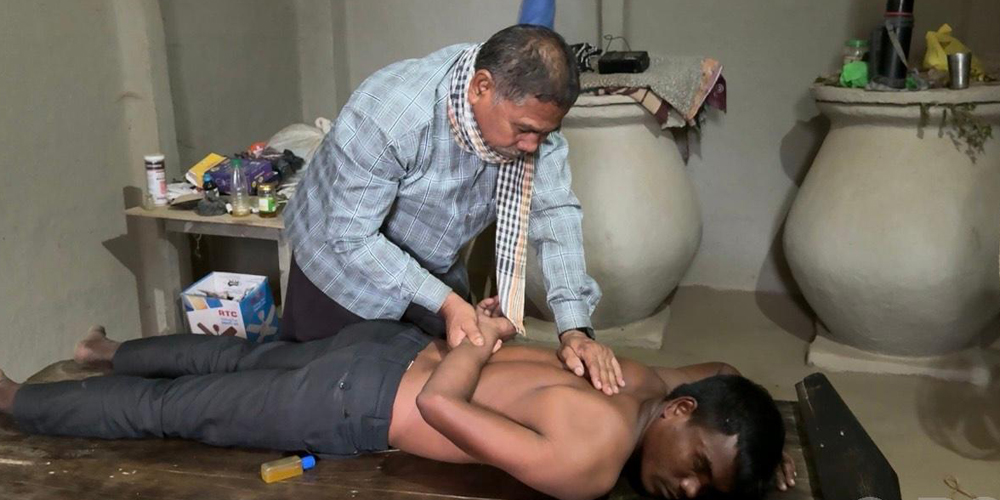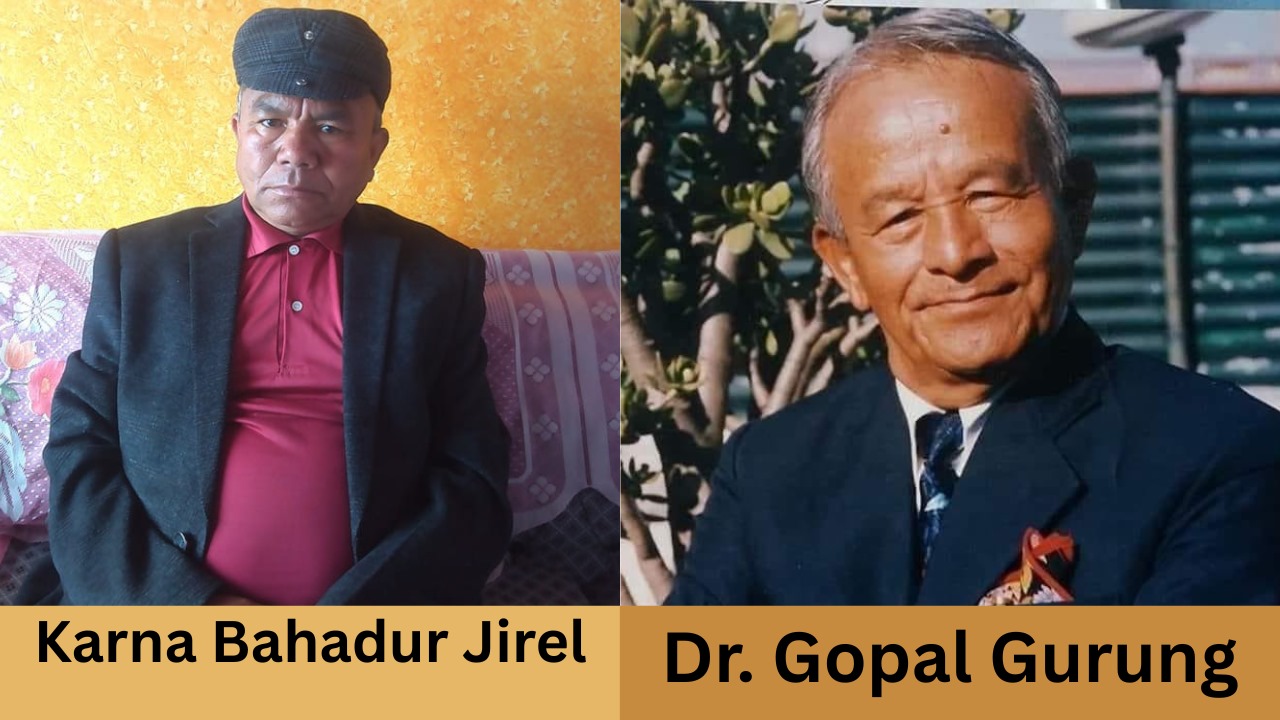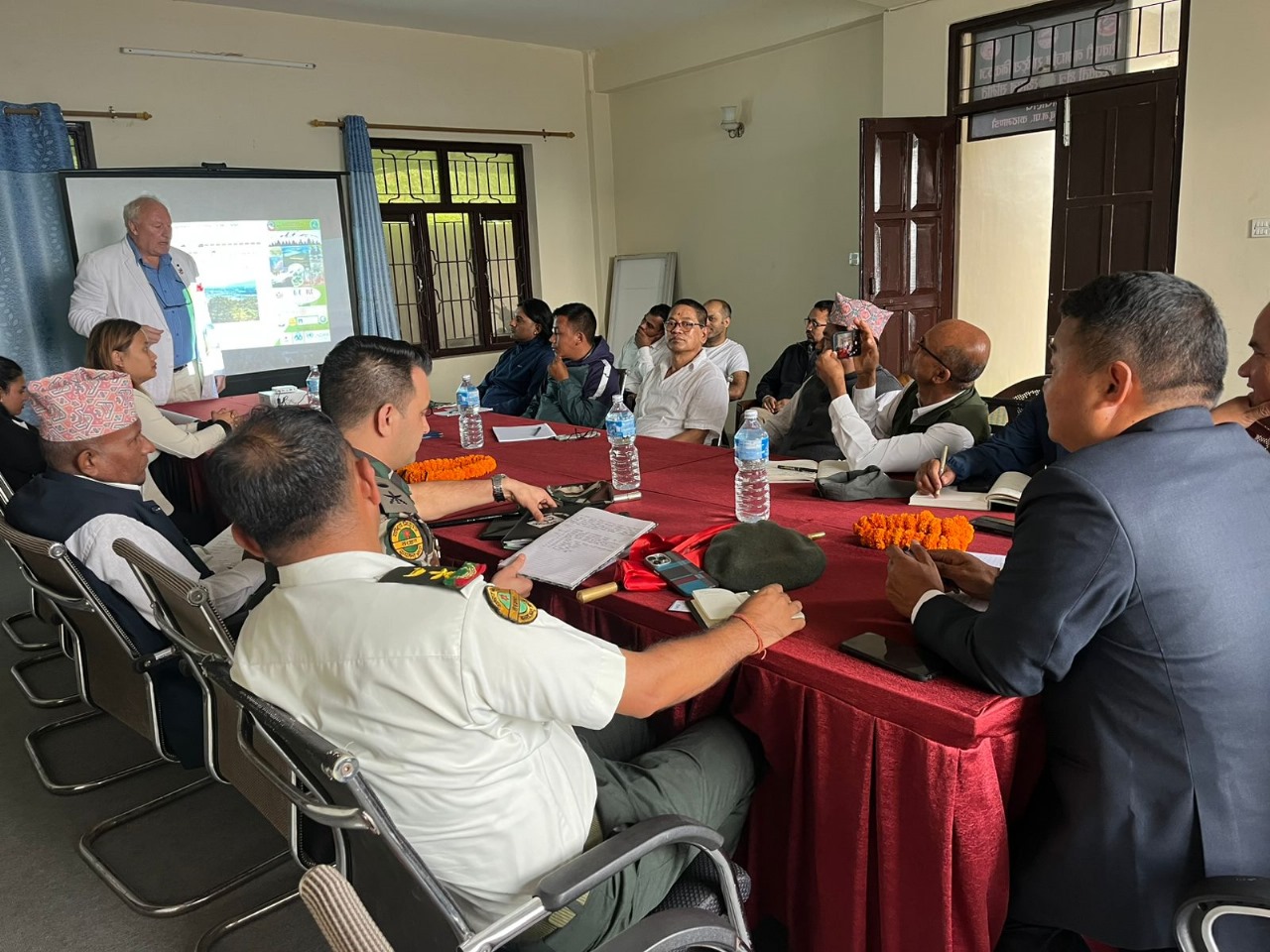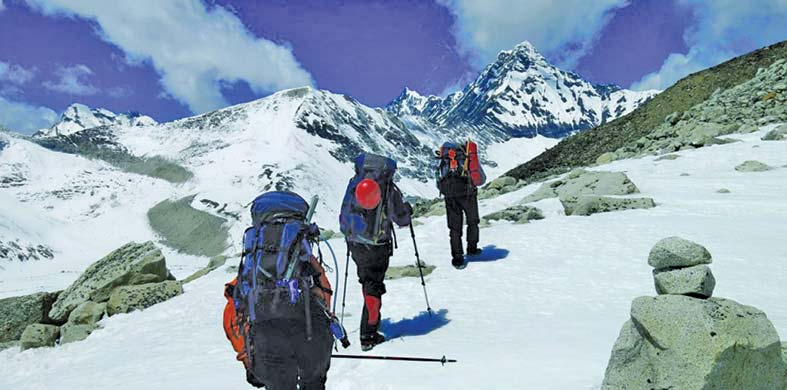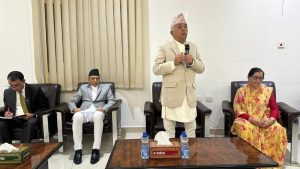Kathmandu, 8 Oct: A grand fair has commenced at Kumakh Hill (Lek), a famous religious and natural site in Salyan, on the occasion of Kojaagrat Purnima.
This fair, traditionally held after Dashain, is considered the district’s most significant historical and cultural event. Devotees have gathered at the Siddha Temple located at the summit of Kumakh for special worship, prayers, and pilgrimage.
Religious Faith and Tradition
Special prayers and worship are offered at the Siddha Temple on the peak of Kumakh Hill every year on Chaturdashi and Kojaagrat Purnima. According to the temple priest, Sher Bahadur Dangi, a tradition holds that a first-time visitor to the temple should circle it seven times while making a wish, and if the wish is fulfilled, they should offer a sheep as a sacrifice. The Siddha Cave, located within the interior part of Kumakh, is considered extremely important from a religious perspective. This approximately 150-meter-long cave contains unique rock formations and paintings. A grand fair and worship ceremony are organized here every year on Maha Shivaratri. Around 150,000 devotees visit Kumakh every year for the fair and for pilgrimage.
Natural Beauty
Located at an altitude of approximately 2,537 meters above sea level, the peak of Kumakh offers clear views of the land and snow-capped mountain ranges of up to 15 districts, including Rukum, Rolpa, Banke, and Jajarkot.
Local resident Dilliraj Jaisi says, “Kumakh is formed like a natural ‘view tower,’ from where one can observe the view from the mountains to the plains simultaneously.” The forests here are home to rare herbs, birds, red deer, ghoral, leopards, and other wildlife. Ram Bahadur Basnet, Vice-chairman of Siddhakumakh Rural Municipality, stated that since the Kumakh area is a safe habitat for wildlife, emphasis must be placed on its conservation.
Culture and Folk Tradition
A fair (Jatra) is traditionally held on the flat land towards Jimali, about 1 kilometer below the Siddha Temple, on the day of Kojaagrat Purnima. During the fair, local folk artists from surrounding villages present dances and songs like Bangadi, Tappa, Sorathi, Paiseri, Dohori, and Serenge.
It is believed that the preservation and display of folk culture fosters mutual intimacy. In recent times, cultures that were on the verge of disappearing can also be seen and observed at the fair.
Literary figure Dr. Purna Bhandari ‘Pankaj’ stated that “the Kumakh fair has played a major role in preserving local folk culture and tradition.” According to him, “This fair is an occasion for those who have gone abroad to return home during Dashain and for friends and relatives to meet.”
Senior folk singer Kharka Budha mentioned that many folk songs are sung about the faith and beliefs associated with Kumakh Lek and its surroundings. According to him, songs connected to Kumakh Hill are also famous.
Kumakh’s hey, hey, the cold is intense, a thread pulled taut,
Who am I, who are you, we’ve become acquainted!!”
“Above is the Kumakh peak, below is the Syaani stream,
My friend’s flower-like youth, I will now take it with me!!”
Devotees also come from districts like Rukum, Jajarkot, Rolpa, and Dang to worship and participate in the fair at Kumakh.
The Fair and Local Products
The traditionally held fairs have become a means of earning income by selling local goods. Locally produced items like bananas, almonds, sweet potatoes, and Jilebi are put up for sale.
Similarly, wooden pipes, authentic song and dance performances, and handicrafts make the fair even more attractive. According to Ramesh Chalaune, Ward Chairperson of Siddhakumakh-1, the number of devotees and tourists coming to see the fair has been increasing every year since the construction and operation of the gravel road. He said, “The number of people coming for worship and the fair has increased by tens of thousands compared to before.”

Tourism Potential
Dambar Shahi, Chairperson of Kumakh Rural Municipality-7, said that Kumakh can be developed as an attraction for both domestic and foreign tourism. Currently, the roads leading to Kumakh—Dhorchaur-Gurudasse-Syaanipipali and Thaarmare-Chaurpani-Okharbot-Gurudasse—have been constructed.
The Division Forest Office, Salyan, has informed that a foot trail was constructed at a cost of approximately 1.8 million rupees, including a 1.5 million rupee grant from the Karnali Province Government and local community labor.
According to Lalitjung Khadka, Information Officer of the Division Forest Office, Salyan, the foot trail, steps, and temple doors have been constructed using the budget allocated by the Ministry of Industry, Tourism, Forest, and Environment under the Karnali Province Government. He stated that after the construction of the foot trail, the journey for devotees and tourists has become easier and safer. As the trail was built by blasting rocks, the previous level of risk no longer exists.
A Confluence of Faith and Beauty
Local resident Nabin Chalaune points out that there is still a need to build more structures on Kumakh Lek. According to him, tasks like constructing railings, open grounds, and temple reconstruction would make it easier for devotees. He added, “If infrastructure development is coupled with promotion, not only domestic but also the number of foreign tourists will increase qualitatively.”
Kumakh is a wonderful confluence of religious faith, cultural diversity, and natural beauty. According to temple priest Sher Bahadur Dangi, the public’s belief that wishes are fulfilled if worship or sacrifice is offered here remains steadfast.
The local residents believe that if coordination between local, provincial, and federal governments can emphasize infrastructure development, conservation, and promotion, Kumakh has the potential to become a major tourist destination of Karnali Province itself.


